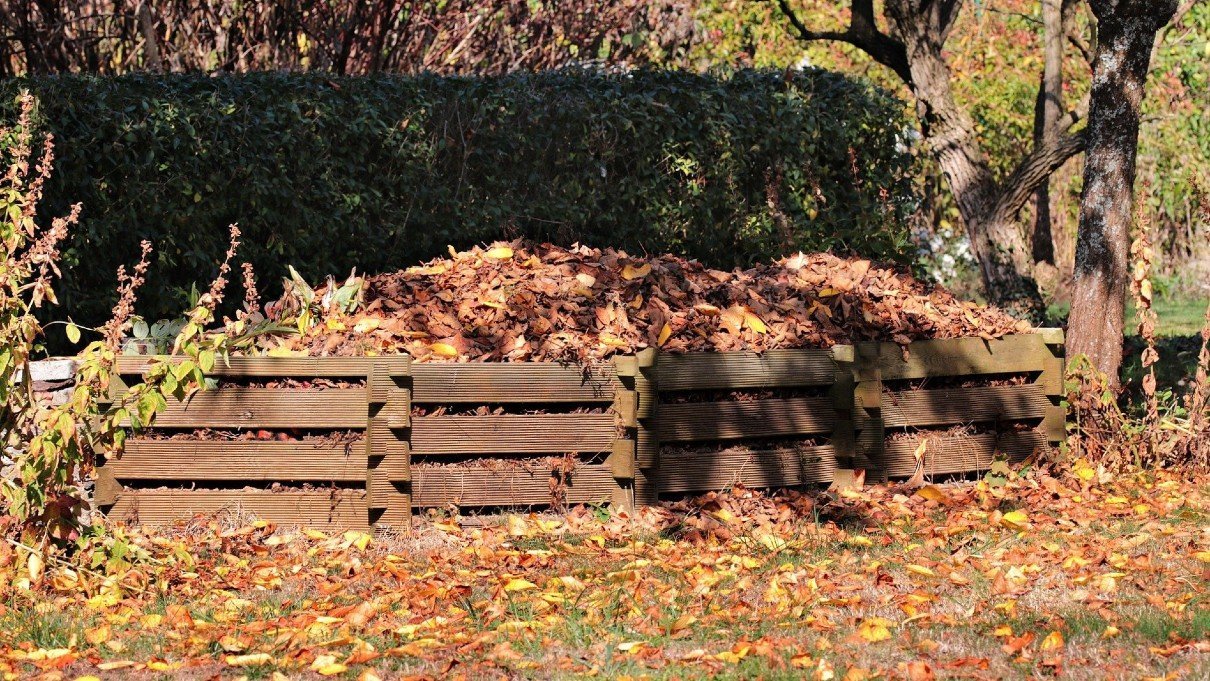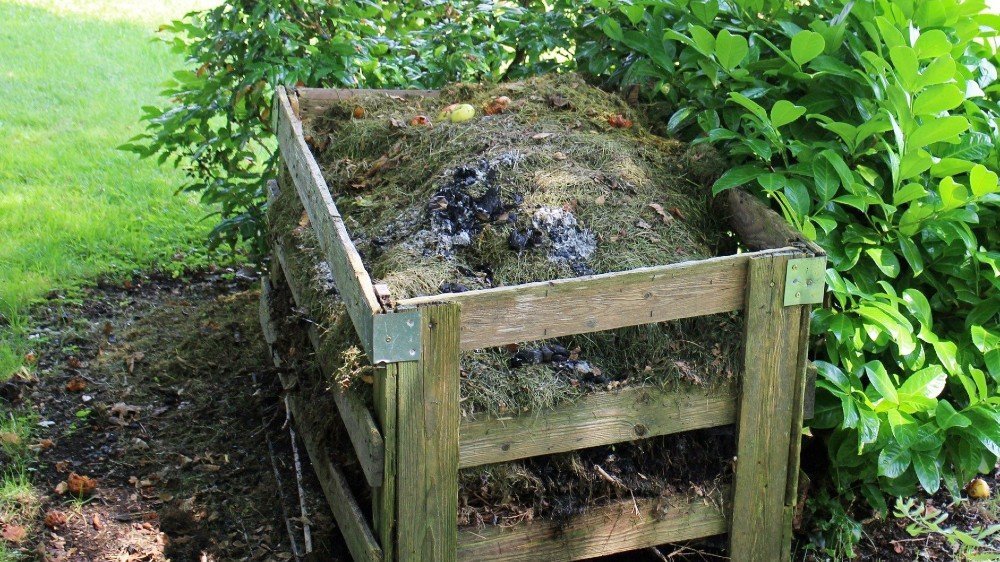How to Start a Compost Heap

Every day we generate more kitchen and garden waste. Composting is the most eco-friendly way of disposing of organic waste.
Instead of sending it to landfills where the organic waste will mummify instead of biodegrading, composting breaks down the waste and allows it to biodegrade into basic components.
Composting can be done in all gardens, big and small. There are even ways of breaking down organic waste into precompost for people who live in apartments.
It’s not difficult to start home composting and consists of only a few steps and a bit of maintenance.
The benefits of home composting include cutting down on the amount of organic waste mummifying in landfills, reducing dependence on fossil fuels, and returning nutrients to the earth.
Why are compost heaps good for the environment?
Composting is “nature’s way of recycling”, as One Green Planet puts it. It’s a natural process that occurs across the world, producing organic matter known as humus.
Humus forms from dead plant and animal matter and looks dark. It can form from anaerobic fermentation (like in bokashi composting) or aerobic decomposition, though they are considered distinct soil components due to their different origins.
Composting involves breaking down organic waste into basic components, transforming the matter into nutrient-rich soil.
This happens due to microorganisms, worms, bugs, fungi, and more. Organic matter is a habitat on its own, allowing these organisms to live and feed on the matter. These organisms are essential for the environment.
In nature, there’s no such thing as waste. Everything is part of a cycle, and this includes organic waste like food scraps.
By composting, you’re enabling the natural cycle to continue. Composting involves redirecting nutrients into the soil, allowing that soil to grow more food.
Nutrients produced by compost can even make more nutrient-rich food production. It’s been found that soil depletion results in less nutritious produce.
The Environmental Protection Agency lists composting as their fifth tier of Food Recovery Hierarchy, as composting food waste and kitchen scraps “help improve soils, grow the next generation of crops, and improve water quality”.
Even if you’re able to make the most of your food waste to feed others and animals, there will always be scraps that need to be composted.
Compost can hold moisture, helping with water absorption and penetration in soil. This can help reduce how much water is needed to tend to plants, with less water runoff.
Compost also filters the water, reducing water runoff and allowing cleaner water to return to oceans.
Composting can also help reduce greenhouse gases.
In landfills, organic matter rots and releases methane and carbon dioxide prior to mummification. The methane emissions from municipal solid waste (organic materials) in landfills are the third-largest source of human-related methane emissions in the US.
When organic matter is composted, the amount of methane and carbon released is decreased compared to how much is released in landfills.
By reducing how much methane and carbon dioxide is released into the air, we can reduce greenhouse gases and how quickly landfills are filled.
And by reducing the amount of landfill space required for organic matter, we can increase landfill capacity and reserve it for the waste we really can’t recycle or reuse.
How composting helps the environment
There are many ways that composting helps the environment. Composting:
- Reduces water runoff and waste
- Enhances water retention in soil
- Promotes higher crop yields
- Recycles organic resources naturally
- Reduces and eliminates the use of synthetic agriculture like fertilizers
- Enables beneficial soil microorganisms and earthworms to prosper
- Helps balance the acidity/alkalinity of the soil
- Uses no synthetic or petroleum-based materials
- Aids reforestation, restoration, and revitalization efforts in many habitats
- Provides carbon sequestration
- Prevents flood and drought cycles by revitalizing and filtering local water sources
How compost heaps work
Compost uses four components to create the ideal conditions for natural biodegradation: organic water, soil, water, and air.
Microorganisms in the soil eat the organic waste and break it down into humus, which contains carbon, as well as inorganic nutrients like phosphorus, potassium, and nitrogen.
Bacteria and fungi break down the organic matter, while protozoa (single-celled organisms), nematodes (small worms), and mites feed on bacteria and fungi. These are then preyed on by predatory nematodes and mites, as well as invertebrates like sowbugs, millipedes, and beetles. This creates their own ecosystem.
Heat is created as a natural byproduct within the first of three stages of composting.
Within the first few days, mesophilic microorganisms that thrive in warm conditions begin breaking down the matter, producing heat. Thermophilic microorganisms thrive in these hotter conditions and begin working in the second stage to break the matter into even finer pieces, using the heat to help break down proteins, fats, and carbohydrates.
It’s important to regulate the temperature as some microorganisms can’t survive these hot conditions.
By aerating and turning the compost, the temperature can be regulated and more oxygen can be provided.
During the third stage of composting, the temperature drops enough to allow the mesophilic microorganisms to finish breaking down the remaining organic matter into humus.
The perfect composting conditions require:
- Plenty of air aided by turning the compost heap regularly
- Being moist, but not soaking wet
- A proper mix of carbon to nitrogen, using the ratio of 30:1
- Adequate amounts of soil to provide enough microorganisms
- Small particles by chopping up organic waste
- Heat, which is produced naturally by the process
Why should I start a compost pile?
The main reason for starting a compost pile is to reduce waste.
One of the most well-known threats to the environment is just how much waste humans produce and don’t properly dispose of. Organic matter is the easiest form of human waste that we can all help degrade naturally.
By composting, we can reduce the amount of waste sent to landfills and aid our local environment.
Starting a compost pile is also more beneficial than sending it to a compost facility, as it cuts down on the number of vehicle emissions released from pick-up trucks.
Of course, if you really can’t start a compost pile, using a local compost facility is better than nothing!
If you’re a keen gardener, composting can make a big difference to your plants, whether you grow flowers, vegetables, fruit, or anything you feel like.
The nutrients in your compost can help them grow bigger and better, so you won’t need to use commercial fertilizer.
Composting also helps reduce how much money you spend on your garden and household.
By composting, you reduce how quickly your trash builds up, leading to fewer bin liners and waste collections you need.
Instead of throwing out food waste, you can transform it into natural plant food, eliminating the need for fertilizers and pesticides, as well as how much water you need to use.
You can also see how much food waste you produce each month more visually, helping you to reduce food waste and save food and money over time by transforming your shopping habits.
How to make a compost heap at home
Compost heaps can be made on their own in the corner of your garden (or allotment) or you can use a compost bin or container.
A container can be as simple as a wooden frame to keep the compost from spilling out over the edges, or you can buy compost bins and tumblers.
There are a few different types of compost heap:
- Loose pile: animal-friendly (you might get visiting hedgehogs or toads), no or limited walls.
- Compost bin: good for invertebrates and worms.
- Boxed compost heap: using planks, posts, and chicken wire to surround the heap.
When constructing your own compost bin, make sure that the container doesn’t have a bottom so your compost touches the soil beneath it. A slight base, such as a few planks of wood with gaps between them, can help aerate the pile from below.
You can use wooden pallets to construct a compost bin by building a three-walled box or using wire to make a gated pallet box.

When adding organic waste to your pile, try to keep to the 30:1 carbon to nitrogen ratio.
Carbon-rich waste is known as brown materials, while nitrogen-rich waste is known as green materials. You’ll also see them called mix, ingredients, and sources.
Cornell University says that the 30:1 carbon-to-nitrogen ratio is the ideal ratio. With fewer carbon sources, the nitrogen will produce more ammonia gas, resulting in more odor and fewer nutrients for the compost.
However, a 50/50 mix will still compost, it just won’t be as effective.
Carbon sources include:
- Dry leaves
- Paper
- Straw
- Cardboard
- Small twigs and hedge cuttings
Vegetable scraps will make up the most of your nitrogen-rich sources, but other materials high in nitrogen include:
- Grass
- Coffee grounds
- Weeds
- Livestock manure (not cat or dog waste)
- Hair and fur
- Paper tea bags
If you don’t have a closed compost container, it’s best to avoid adding meat or dairy to your compost to avoid attracting pests.
Layer your sources each time you add to the compost heap. The three basic layers are carbon, nitrogen, and topsoil. By adding soil to the top of your compost every time, you introduce more microorganisms.
To maintain your compost heap, you should turn the compost heap often.
The more regularly you turn your pile, the better. Daily is recommended, but every other day is good as well. As long as you turn the pile once a week, it will keep composting instead of rotting.
Turning helps to improve aeration and moves larger pieces into the middle where it can be broken down more quickly.
Whenever the pile looks a bit dry, moisten the compost heap with some water. You can cover the pile on hot days to retain moisture.
If you don’t add to your pile very often, turn and water the heap every few weeks or a week or two after adding more materials.
When your compost is finished, it will be a dark, rich color and have a crumbly, smooth texture. You may have bits of wood or fibrous pieces in the compost, but you won’t have intact peelings or leaves.
If you do find intact pieces, put them back in the compost to break down further.
Finished compost should smell similar to a forest on a wet day, without traces of ammonia or sour odors. If it doesn’t smell right, give it more time to mature.
What are compost heaps used for?
Compost can help prevent plant diseases by treating nutrient deficiencies by improving the structure of the soil with important nutrients, balanced PH levels, and allowing better water infiltration and retention.
You can use finished compost as mulch on top of the soil, which absorbs more water and prevents weeds.
It’s best to use compost as mulch in late winter or early spring to make up for the loss of nutrients in the soil.
Compost can also be added to potting soil with vermiculite and topsoil, or sprinkled on top of flower and vegetable beds. And compost can even be spread on lawns to help maintain or grow grass.
For flower beds, it’s best to add a layer of compost about 10 centemeters down into the soil before planting your flowers. You can then add a thin layer of compost-enriched soil around the base of your plants to introduce more nutrients.
Trees can also benefit from compost being spread around their roots, which can protect trees from drought and disease. You can do this once or twice a year to promote tree growth.
Plants like melons, eggplant, cucumbers, squash, and tomatoes can even grow in compost directly.
If you want to increase the nutrients while watering, you can make compost tea to feed your plants.
